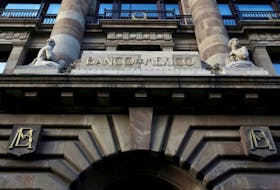
Cheema Mumtaz, associate professor of agronomy at the Memorial University campus in Corner Brook, has been studying five different corn hybrids for a field experiment at the Pynn’s Brook Agricultural Research Station.
His research could enhance Newfoundland and Labrador’s potential to grow corn using the manure from dairy cows as fertilizer. He is studying the root growth and its role in phosphorus uptake in corn crops, in hopes of learning more about phosphorus, the ability of roots to use phosphorus in developing healthy roots, and the impacts of excessive phosphorus in the soil — something about which he says little is known.
“Results of my research will be significant in growing the local dairy industry into something much more feasible and profitable,” Mumtaz said.
Mumtaz, an argonomist at Grenfell Campus’ Boreal Ecosystem Research Initiative, has been growing and studying the lush, green plots of corn plants since June. He hopes to harvest the corn in October. It is the first year of a guaranteed three-year experiment, which he is hoping to extend to at least five years if the funding is available.
The expansion of the dairy industry in the province has led to an increase in the feeding requirements of dairy animals and availability of dairy manures, he said. Silage corn hybrids with higher biomass production, which can be used as feed, are required to be grown in the province to meet industry feed and forage requirements. Silage corn production is currently very low, and it is costly to bring in silage corn, which also tends to be of low quality, according to Mumtaz.
The new knowledge gained through his research will help the industry become more self-sufficient, according to the professor, ensuring the continued growth of the region’s agricultural industry. While only 10 per cent of the feed comes from within the province now, Mumtaz would like to see it be 100 per cent.
“We are self-sufficient in milk and chicken, and other stuff,” he said. ”I am trying to help the farmers indirectly in building some food security in the province.”
There are a number of objectives for the collaborative research initiative, but Mumtaz is also particularly intrigued with also studying the greenhouse gas emission data being compiled.
Mumtaz said he hopes to be able to expand his research in the future to include vegetables and other produce to be able to help provide additional food security in the province.
Twitter: @WS_CoryHurley








